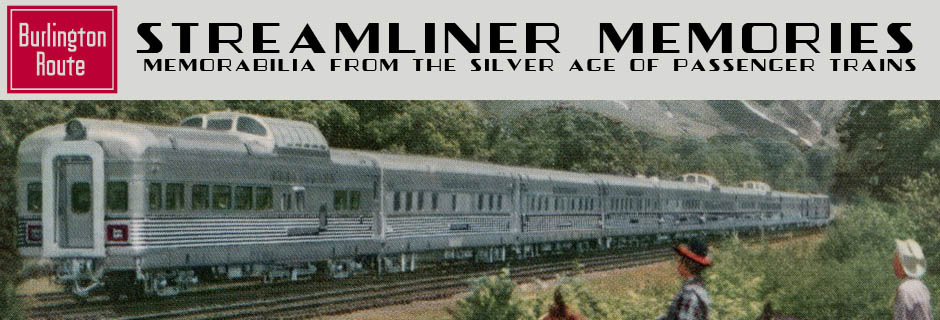When the City of St. Louis was a mere streamliner, it had its own on-board stationery. By the mid-1960s, however, after the Norfolk & Western had taken over the Wabash, the Union Pacific printed just one set of stationery for … Continue reading
Category Archives: City of Los Angeles
Since Union Pacific domeliners only had two or three domes per train, most of the passengers would be elsewhere. Here are some postcards the UP used to advertise the coaches and sleeping cars on its domeliners. Click any image to … Continue reading
This 1955 dinner menu features Olvera Street, a Mexican-style marketplace that still operates today in Los Angeles, on the front cover. Like a previous lunch menu, the inside of this menu appears to have been edited in preparation for another … Continue reading
It is hard to imagine any nicer place to eat than in a dome-diner. As shown below, the dome portions of the COP and COLA diners were nearly identical. The back of this postcard says it is from the City … Continue reading
In the early 1950s, the City of Los Angeles was Union Pacific’s all-Pullman equivalent of the Santa Fe Super Chief. Since it didn’t have coaches, it gained only two domes in 1955: a dome-diner and a dome-observation. This meant passengers … Continue reading
The Los Angeles train terminal, the last major train station built in the United States, is featured on the cover of this heavily edited lunch menu. The menu itself looks like it was being modified for future editions: one of … Continue reading
The Union Pacific managed to scrounge up enough streamlined cars to put the City of Portland on a daily basis on February 15, 1947. The City of Los Angeles went daily on May 14, and, as previously noted, the City … Continue reading
A consulting firm named Coverdale and Colpitts (now part of URS) once did a variety of economic analyses for the rail industry. In 1935, the firm published a report on the Burlington Zephyrs, followed by reports in 1938, 1939, 1941, … Continue reading
Like the overnight Chicago-Denver trains, the two-night Chicago-Pacific Coast City trains were timed to minimize the loss of business hours. This worked especially well westbound, the direction in which time zones work in the traveler’s favor. During the late 1930s, … Continue reading
Experience with the City of Portland and City of Los Angeles had proven to the Union Pacific that its first-generation streamliners were too small for anything but local service. So it cancelled its planned fourth train, the M-10003, and ordered … Continue reading
